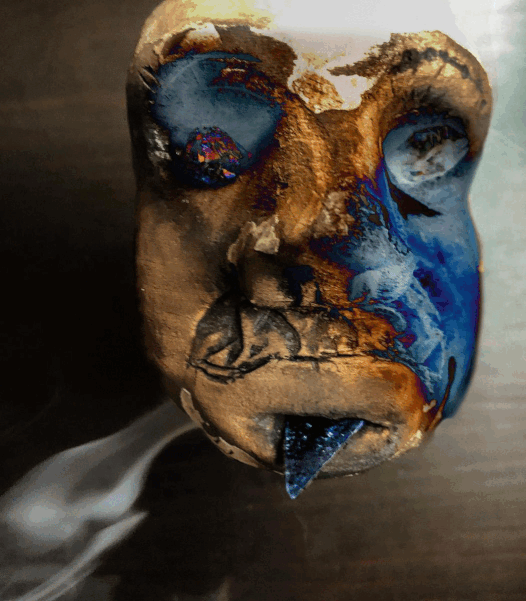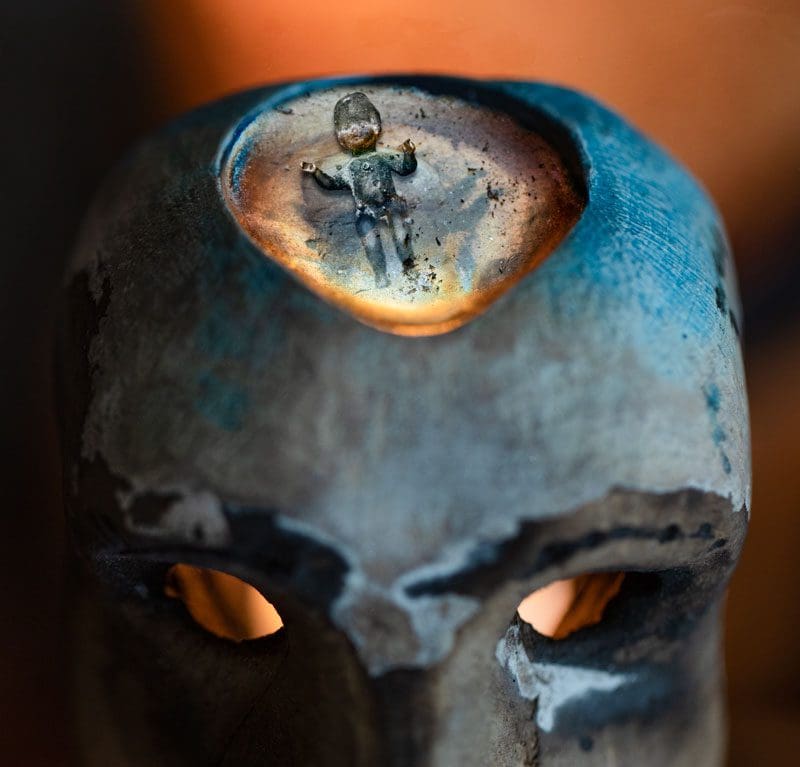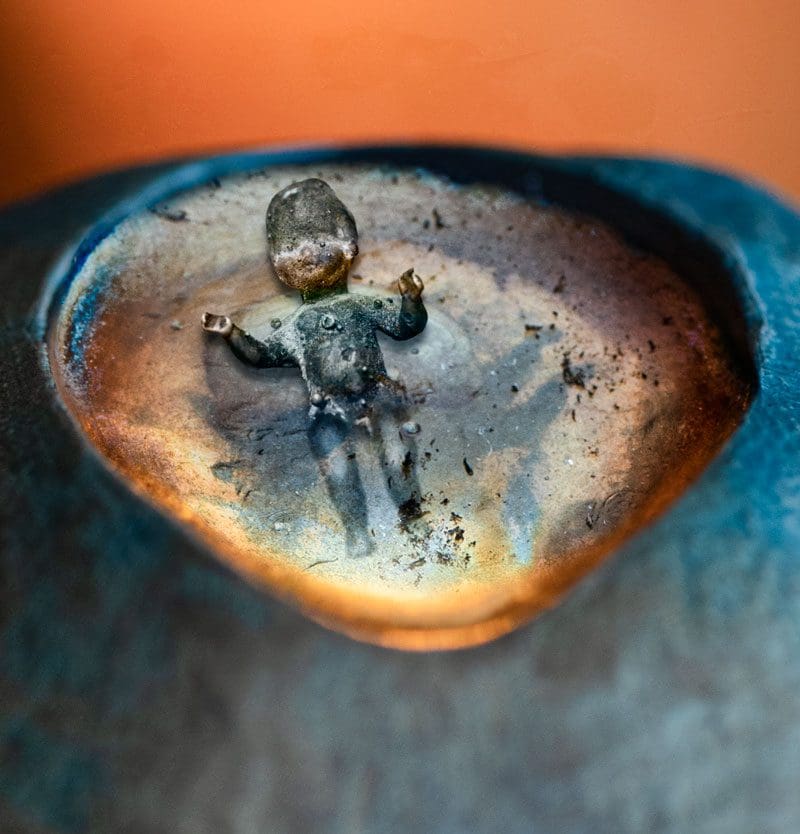In this exploration of the hard problem of consciousness, Dr. Slav uses a mask to delve into a fundamental inquiry – why are you so sure that you are conscious? What does it mean to be aware of one’s existence, to process sensations and perceptions, to be able to reflect upon one’s thoughts and emotions?
Let’s go over these questions before Dr. Slav offers an answer by wearing the mask to bypass the conventional user interface of space-time to perceive the fundamental realm of conscious agents.
What is consciousness?
Is it our capability to process information and make decisions? Is it our ability to perceive and make sense of the world around us, to feel pain and pleasure, joy and sorrow? Or does our consciousness reside in our ability to introspect, to think about our thoughts and be aware of our awareness?

What makes us conscious beings?
Is consciousness a unique by-product of our complex neural networks or is it an inherent quality of all life, perhaps even of the universe itself? Can we define consciousness simply as the ability to have experiences, or does it encompass more than our senses, emotions, and thoughts?
Can consciousness be created?
Could we design and build an artificial consciousness, a sentient machine capable of self-awareness and independent thought? If we could, would this artificial consciousness be equivalent to human consciousness? How would we know if we had succeeded?
Can consciousness be measured?
Are there degrees of consciousness or is it an all-or-nothing phenomenon? How do we quantify something as subjective and elusive as consciousness? Can we objectively measure our subjective experiences? Is there a way to ascertain if other beings possess consciousness, and to what degree?
What is the purpose of consciousness?
Why did consciousness evolve? Does it serve an adaptive function, making us more capable of survival and reproduction, or is it simply an intriguing byproduct of our complex brains? Does consciousness endow life with meaning, or is meaning something we impose on life through our consciousness?
How does consciousness relate to the universe?
Is consciousness a fundamental component of the universe, akin to space and time, matter and energy? Is there a possibility that the universe itself is conscious in some way? Or is consciousness merely an emergent property of certain complex systems, such as the human brain?
What is the purpose of of this question?
In addressing the hard problem of consciousness, these questions hardly touch the surface. This inquiry leads us to more than just scientific or philosophical discourse, but into the realms of the existential, the metaphysical, and the spiritual. While science continues to explore and seek answers to these mysteries, one thing is certain: the hard problem of consciousness continues to stimulate our collective curiosity and provoke fascinating debates about the nature of reality and our place within it.
Dr. Slav
an acclaimed physicist, had spent his life investigating the foundations of reality and his research led him to a revolutionary hypothesis – that our perceptions of space and time were merely user-friendly interfaces, veiling the underlying reality where consciousness reigned supreme.
To test this theory, Dr. Slav crafted an unconventional instrument, a kind of mask, that used an amalgamation of advanced quantum physics and artificial intelligence to alter perceptual interfaces. His hypothesis suggested that by wearing this mask, he could bypass the conventional user interface of space-time and perceive the fundamental realm of conscious agents.

When he first placed the mask upon his face, he braced himself for the unknown. The mask immediately began to dismantle the familiar spatial-temporal perception. Sounds morphed into unusual frequencies, physical forms dissolved into undulating waves, and colours he’d never seen before painted the space around him.
Gone were the traditional laws of physics, replaced with a pulsating matrix of conscious agents. He could see his thoughts, not as abstract concepts, but as distinct entities interacting with others in a symphony of exchange and transformation. He perceived emotions as dynamic transformations in this matrix, their ripple effects influencing countless other conscious agents.
Time did not flow as he knew it. Instead, it was an ever-changing topography, modulating with the flow of conscious interactions. The future, the present, and the past were not distinct temporal compartments but existing simultaneously, a reflection of their interconnection through the web of conscious agents.
Dr. Slav saw a universe where everything, from the smallest particle to the grandest galaxy, was an interface icon representing complex networks of conscious agents. The reality he knew was a useful illusion, a simplified facade to navigate the impenetrable complexity of interactions between conscious agents.
The most profound realization came when he attempted to perceive his own being. There was no physical form, just a swirling nexus of conscious agents, interacting, transforming, and evolving in an ongoing dance of consciousness.
After removing the mask, Dr. Slav, once a physicist, was now an explorer of consciousness, having gained an understanding that challenged the very foundations of perceived reality. His discovery implied a radical reconceptualization of the hard problem of consciousness. Consciousness was not a byproduct of the physical world; instead, the physical world was an illusion born out of the intricate interactions of conscious agents.
This monumental discovery promised to redefine our understanding of consciousness, shaking the foundations of physics, philosophy, and our perception of reality.


















































































































